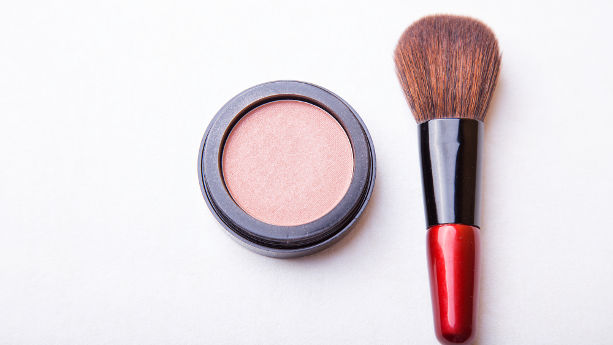
Certain products are subject to restrictions on Amazon. In many cases, Amazon only reflects the regulatory requirements, in the sense that certain products must comply with mandatory standards of substance restrictions. However, some products are subject to standards that are otherwise voluntary, or outright banned – due to Amazon policy.
In this guide, we only focus on products that Amazon either prohibits or restricts for sale on its US marketplace.
Methodology: We used the list of products listed on the Amazon Seller Central page titled “Restricted products” as the reference point. We have expanded on requirements that this page does not cover in detail. Notice that we do not cover all restricted products in this guide.
Content Overview

FREE CONSULTATION CALL (US, EU & UK)
- Request a free 30-minute call with Ivan Malloci to learn how we can help you with:
- Find product requirements
- Certification and labeling
- Lab testing
Cosmetics Products
Amazon prohibits the listing of certain cosmetic products if they do not comply with their requirements. Their compliance checklist has several requirements; here are some examples:
a. Packaging – the product must clearly show the serial number
b. Labeling – The label must show the name of the product, and should not indicate that the product is “FDA approved”, unless this information is true
c. The products must comply with the FDA requirements
The FDA requires you to ensure your cosmetic products comply with requirements such as the following:
- Cosmetic products should not contain banned or restricted substances
- Cosmetic products must be safe for use
- Color additives must be FDA-approved
- Cosmetic products must be properly labeled (e.g. with warning or caution statements)
- Products must be manufactured according to good manufacturing practice
Prohibited products
Amazon lists several cosmetic products that it prohibits from listing on its platform, which include:
- Corrective and cosmetic contact lenses
- Some skin-lightening products
- Aerosol products that contain vinyl chloride
Prohibited ingredients
Amazon also lists some ingredients that are prohibited in cosmetic products, including the following:
- Bithionol
- Chloroform
- Halogenated salicylanilides
- Methylene chloride
- Trichloroacetic Acid
Recommended article: Cosmetics Safety and Regulations in the United States: An Overview
Jewelry
The Amazon Jewelry & Precious Gems page states that such products must comply with the FTC’s Guides for Jewelry, Precious Metals, and Pewter Industries, which mainly set requirements concerning misleading claims and misused terms.
For example, it is deceptive to represent that an industry product is hand-made unless its final shape was accomplished by hand labor.
The page also mentions the following acts:
a. National Gold and Silver Stamping Act of 1906
b. Clean Diamond Trade Act
In addition, Amazon states that sellers must comply with all applicable laws, regulations, and standards relevant to jewelry. While they do not mention specific regulations and standards, this could potentially include the following:
a. ASTM F2999 – Standard Consumer Safety Specification for Adult Jewelry
b. ASTM F2923 – Standard Specification for Consumer Product Safety for Children’s Jewelry
c. California Proposition 65
Additionally, Amazon bans the listing of certain types of of jewelry and precious gems, such as the following:
- Gold or silver products that are not stamped in compliance with the National Gold and Silver Stamping Act
- Unauthorized irradiated gemstones
- Clarity-enhanced white diamonds
Jewelry products from certain sanctioned regions may be subject to import restrictions.
Recommended article: Jewelry Regulations in the United States: A Complete Guide
Composite Wood Products
Amazon specifically prohibits the listing of products that contain regulated composite wood that:
- Do not comply with EPA’s formaldehyde standards
- Do not carry individual labels per EPA’s regulation
Amazon’s page on composite wood products references 40 CFR Part 770 – Formaldehyde Standards for Composite Wood Products.
40 CFR Part 770 sets requirements such as the following:
- Formaldehyde emission standards (e.g. particleboard should contain a maximum of 0.09 ppm of formaldehyde)
- Certification
- Labeling
Recommended article: Toxic Substances Control Act (TSCA) Certification: A Complete Guide
Upholstered Furniture
Amazon mentions that you must comply with the US Law Label requirements, which must be applied to upholstered furniture in many US states. This label must include information about the products filling materials, and other details.
Amazon also requires upholstered furniture to comply with national and state level requirements. Even though Amazon does not mention the specific regulations or standards, this could include the following:
a. 16 CFR Part 1640 – Standard for the Flammability of Upholstered Furniture
b. California Technical Bulletin (TB) 117-2013
Finally, Amazon explains that you must obtain the required licenses and permits. It also references the following resources:
a. International Association of Bedding and Furniture Law Officials Labeling Guidance
b. A Guide to United States Furniture Compliance Requirements
c. FTC Business Guidance Down…But Not Out: Advertising and Labeling of Feather Down
Recommended article: Furniture Regulations in the United States: A Complete Guide
Electronic Products
Amazon requires electronic products to comply with relevant national, state, and local rules and regulations. It explains that you need to comply with their “Radio Frequency Devices policy”.
Their page on “Radio Frequency Devices” explains that you need to comply with FCC – 47 CFR Part 15 – Radio Frequency Devices, which sets requirements such as:
a. Authorization procedure (SDoC or Certification)
b. Labeling
c. Technical documentation
d. Testing
Here are several examples of products that Amazon has prohibited from being listed on its platform:
- Radar shifters meant for blocking traffic signals
- Smart Card programmers
- Software DSS emulators
- Video game controllers meant to replace existing technology
- Standard-size SIM cards modified into Micro SIM cards
- Audiobook players produced as government property by the NLS
Recommended article: Electronic Product Regulations in the United States: An Overview
Batteries
As with other products, Amazon also mandates that you ensure that your batteries comply with its policies, as well as relevant federal, state, and local rules.
Although the Amazon page on restricted electronics does not mention any regulation that is specific to batteries, there are other Amazon guidance pages that explain what you need to comply with:
- Relevant UL standards (e.g. UL 2054 – Household and Commercial Batteries)
- Reese’s Law
- 16 CFR Part 1263 – Safety Standard for Button Cell or Coin Batteries and Consumer Products Containing Such Batteries
- Hazardous Materials Regulation (HMR)
Amazon lists a few battery products that it prohibits you from listing on its platform. This includes the following:
- Cylindrical lithium-ion cell battery types: 14500, 16340, 18650, 20700, 21700, and 26650
- Expired batteries
- Branded replacement batteries
Recommended articles:
a. Button Cell and Coin Battery Safety Standards and Regulations in the United States
b. Lithium Battery Regulations and Standards in the US: An Overview
Lighting Products
Amazon requires your lighting products to comply with its policies as well as federal, state, and local laws. Besides that, it lists several regulations under “related pages” or “useful information”. We provide two examples below.
16 CFR Part 305 – Energy and Water Use Labeling for Consumer Products Under the Energy Policy and Conservation Act
This regulation sets labeling requirements for consumer appliances such as:
- Lighting products
- Dishwashers
- Water Heaters
- Ceiling Fans
Appliance Efficiency Regulations – Title 20 (California)
These regulations set efficiency standards for energy and water consumption for some types of electronics and plumbing equipment, in California. Here are some examples of covered products:
- Luminaries
- Computer monitors
- Air conditioners
Prohibited items
Here are some examples of products that are specifically prohibited by Amazon:
a. Adapters for incandescent lamps without medium screw bases
b. Light bulbs that do not comply with relevant energy efficiency standards
Recommended article: LED Lighting Regulations in the United States: An Overview
Children’s Products
Amazon’s Seller Central has pages covering requirements for children’s apparel and children’s footwear. Amazon generally requires compliance with federal and state requirements, such as the CPSIA. Amazon explains that children’s footwear and apparel must comply with the following CPSIA requirements:
- Substance restrictions on lead limits
- Flammability requirements
- Tracking label requirements
- Children’s Product Certificate (CPC)
- Lab testing from a CPSC-accepted lab
Note that while Amazon only lists two product categories, all children’s products must comply with CPSIA requirements. Besides the requirements listed above, this may include items such as:
a. Compliance with the requirements of relevant standards, for example, ASTM F963 for toys
b. Registration card for durable infant products
c. Small parts requirements
d. Warning labels
Recommended article: Children’s Product Regulations in the United States: An Overview
Medical Devices
Amazon requires listings of medical devices to comply with its policies as well as federal and state requirements.
For example, medical devices for sale on Amazon must comply with FDA requirements, such as:
- Being cleared by the FDA (Classes I and II non-exempt medical devices)
- Properly using the “FDA cleared” or “FDA approved” claims
- Not being subject to FDA warning letters
- Being labeled with the company’s name, address, and product usage instructions
More in general, the FDA requires medical devices to comply with requirements such as:
- Establishment registration
- Medical device listing
- Premarket notification 510(k) (if needed) or Premarket Approval
- Quality System regulation
- Labeling requirements
- Medical device reporting
The list of medical products prohibited for sale on Amazon include:
- Pre-owned diabetic test strips
- Ear candles
- Expired medical products
- Unregistered Psoriasis lamps
- Certain menstrual cups (e.g. Monzcare R-cup)
- Class IIIB and Class IV lasers
- Unapproved Class 1 devices that claim they can diagnose diseases (e.g. STD test kits)
- Used medical devices
Recommended article: FDA Regulations For Medical Devices: An Overview
Products Containing Prohibited Claims
Amazon prohibits the listing of products that carry improper claims. Here are some examples of regulations that regulate claims:
- 16 CFR Part 260 – Guides for the Use of Environmental Marketing Claims
- The Federal Food, Drug, and Cosmetic Act
- The Federal Insecticide, Fungicide, and Rodenticide Act (FIFRA)
Here are some examples of prohibited claims listed by Amazon:
a. Claim that a product without FDA approval can, cure, diagnose, mitigate, prevent, or treat diseases
b. Claim that a pesticide is “harmless”
b. Make environmental claims (e.g. ozone-friendly) without providing any proof that the claim is true
Recommended article: Federal Insecticide, Fungicide, and Rodenticide Act (FIFRA) Guide
















 Create compliance checklists for your product (US, EU & UK)
Create compliance checklists for your product (US, EU & UK) 20+ product certificate templates
20+ product certificate templates Create label files
Create label files Book product testing
Book product testing